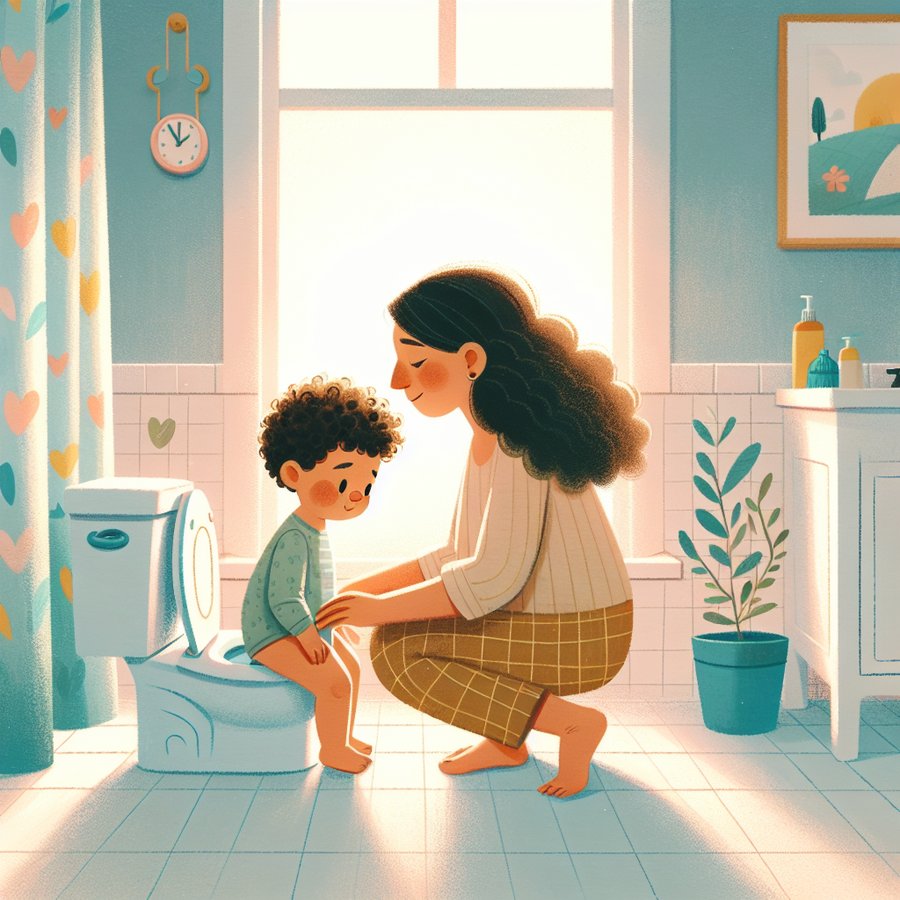What is Baby-Led Potty Training?
Baby-led potty training, a term that has been gaining traction among parents and caregivers, refers to the practice of allowing your baby to lead the way in their potty training journey. This method fosters independence by relying on the child’s natural cues and readiness, rather than a predetermined timeline set by adults. My journey into this less-trodden path began when my little one showed signs of readiness much earlier than I anticipated. It was a fascinating experience, watching them take the lead, showing me that every child’s journey is unique.
This method encourages parents to be more attuned to their child’s signals for needing to go to the bathroom and supports the child’s natural instincts towards using the potty. In contrast to traditional methods that often involve a more structured schedule, baby-led potty training promotes a stress-free process that can lead to early independence in toileting.
Why Choose Baby-Led Potty Training?
The choice to follow a baby-led approach to potty training stems from the desire to honor the child’s pace and readiness. My decision was influenced by witnessing the struggle and frustration in more conventional methods. The realization that my child could lead their own potty training journey was liberating. It was about trusting my baby’s capacity to understand and respond to their body’s needs, thereby reinforcing their confidence and self-awareness from an early age.
Moreover, this approach can drastically reduce the power struggles that often accompany traditional potty training methods. By avoiding the imposition of adult schedules on a child not yet ready, both parent and child experience less stress and anxiety, making the process more natural and enjoyable for everyone involved.
How Does Baby-Led Potty Training Work?
Baby-led potty training begins with observing your child for signs of readiness and interest in the potty. These can include showing curiosity about the bathroom habits of others, staying dry for longer periods, or communicating the need to go in their own way. Once these signs emerge, introduce the potty in a no-pressure situation, allowing them to explore and become familiar at their own pace. It’s a game of patience and encouragement, celebrating all the small victories along the way.
During my journey, I found it beneficial to create a positive and stress-free environment around the potty. Cheerful books about potty training, like [“Potty” by Leslie Patricelli](https://www.amazon.com/Potty-Leslie-Patricelli-board-books/dp/0763644765), became a staple in our bathroom visits. This approach not only made the process enjoyable but also helped in reducing any resistance or fear associated with the potty.
What Are the Signs of Readiness for Baby-Led Potty Training?
Identifying the signs of readiness is crucial in the baby-led potty training journey. These signs often include physical readiness, such as being able to sit up unassisted, showing interest in others’ bathroom habits, or expressing discomfort with soiled diapers. Emotional readiness is also essential, where the child shows a desire for independence or a willingness to please.
Remember, every child is unique, and these signs can vary widely. My child, for example, began showing interest in the bathroom habits of older siblings, which was my cue to introduce the potty. Patience and attentiveness to these individual cues are key to successfully starting the potty training process.
How to Implement Baby-Led Potty Training Effectively?
To implement baby-led potty training effectively, start by introducing the potty in a casual and unforced manner. Encourage exploration and usage by modeling behavior or reading potty-related books. Always celebrate attempts, no matter how small, and avoid showing disappointment in case of accidents. Keeping a consistent routine can also help, as it builds a sense of security and predictability for the child.
Incorporating resources from experienced parents and experts can also be invaluable. I found articles like supporting a partner with postnatal depression, balancing multiple children’s needs, and creating a budget for baby essentials in the first year helpful not just for potty training but for parenting in general. They provided me with a broader perspective on parenthood, reminding me of the importance of patience, understanding, and adaptability.













